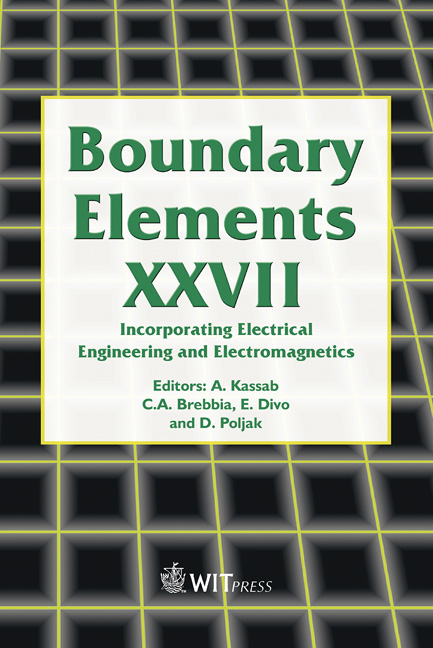Using Three-dimensional CURVIC® Contact Models To Predict Stress Concentration Effects
Price
Free (open access)
Transaction
Volume
39
Pages
10
Published
2005
Size
1,773 kb
Paper DOI
10.2495/BE050231
Copyright
WIT Press
Author(s)
J. J. Rencis & S. R. Pisani
Abstract
CURVICs® are used to couple multiple rotors in an aircraft engine compressor, and are subjected to rotational loading. This work investigates three-dimensional boundary element contact models that contain the stage two aft and stage three forward CURVICs®. The three-dimensional models are used to estimate stress concentration effects in a finite element axisymmetric model under rotational loading. The three-dimensional models generated include a geometrically complex three-dimensional linear elastic body with curved surfaces that are analyzed with the BEASY® boundary element software package. The axisymmetric model uses the commercial finite element code ANSYS®. Keywords: CURVIC, rotors, three-dimensional, axisymmetric, boundary element method, finite element method. 1 Introduction CURVICs® are sometimes used in aircraft engine design where multiple rotor stacks are required. First introduced in 1942 by Gleason Works [1], a CURVIC® is a precision ground face spline. The CURVIC® allows torque transmission between individual rotors, and the self-centering feature of the CURVIC® face centralizes each rotor in the stack. Stress analyses of CURVICs® at General Electric have incorporated both simple two-dimensional and more complex three-dimensional finite element analyses. Photoelastic and strain gage test results are used to substantiate the analyses, and extensive testing of individual components and rotor assemblies validate the CURVIC® life predictions. The more complex three-dimensional analyses and component testing are typically done after the design has been
Keywords
CURVIC, rotors, three-dimensional, axisymmetric, boundary element method, finite element method





